
What are the most effective and highest quality nootropics out there?
This list covers the top nootropic supplements and smart drugs for your brain, how they work, and what their pros and cons are.
Nootropics are a new class of brain enhancers that can increase focus and productivity, enhance memory, and improve mood.
There are several good cognitive enhancers and smart drugs that have been proven to increase mental performance, cognitive function, and mental health and help you reach your brain optimization goals.
But how do you know which are the most effective nootropics on the market today?
We’ve compiled a list of the most powerful brain-boosting nootropics that will help you achieve excellent results.
Table of Contents
Top Nootropic Supplements 2024
- NooCube — Top nootropic supplement overall
- Vyvamind — Good nootropic stimulant for ADHD
- Mind Lab Pro — Good nootropic stack for brain health
- Nooceptin — Good for memory and recall
- Feedamind — Good for focus and energy
- Performance Lab Mind — Great nootropic for athletes
- Qualia Mind — Good for learning and creativity
1. NooCube
NooCube is a highly effective nootropic supplement with a unique and potent blend of scientifically supported natural ingredients. It is specifically designed to enhance cognitive function, improve learning abilities, and help with memory formation and retention. NooCube is the perfect choice for anyone looking to improve memory recall and their overall cognitive performance, from students to professionals and even athletes.
What makes NooCube stand out from the rest is its formulation, which is both potent and safe. NooCube is caffeine-free, making it a great natural alternative to stimulants like Adderall. Overall, NooCube is a top-tier nootropic supplement that delivers on its promises, making it one of the top options available on the market.
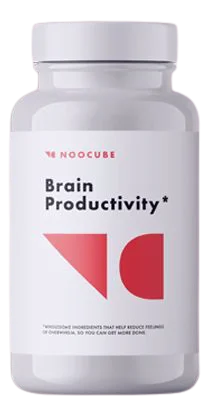
What it’s good for: NooCube is good for anyone who wishes to enhance their brain function and improve their mental performance. It works effectively to improve focus, memory, and problem-solving skills.
Who it’s good for: NooCube is an excellent choice for anyone looking to enhance their cognitive function and brain performance. It is especially beneficial for those who struggle with concentration, memory, and multitasking and is suitable for students, athletes, professionals, and anyone who wants to achieve their optimum.
Pros
- Improves communication between healthy brain cells
- Improves memory and overall cognition
- Protects your brain from oxidative damage
- Repairs damaged neurons
- Promotes new brain cell generation
- Decreases stress levels, anxiety, and fatigue
- Contains B vitamins important for the human brain
Cons
- Might be too pricey if you’re on a budget
- Takes time to work
Active Ingredients
- Bacopa Monnieri Extract 12:1 (20% Bacosides) — 250mg
- L-Tyrosine — 250mg
- Oat Straw Extract 10:1 (Avena Sativa Straw) — 150mg
- Cat’s Claw Extract 4:1 (Uncaria Tomentosa Bark) — 175mg
- Huperzia Serrata (0.5% Huperzine-A) — 20mg
- L-Theanine — 100mg
- Lutemax 2020® — 20mg
- Alpha GPC (Glycerylphosphorylcholine) — 50mg
- Resveratrol 99% — 14.3mg
- Pterostilbene — 140mcg
- Vitamin B1 (Thiamine Hydrochloride) — 1.1mg
- Vitamin B7 (Biotin) — 50mcg
- Vitamin B12 (Cyanocobalamin) — 2.5mcg
2. Vyvamind
Vyvamind is an effective and fast-acting nootropic supplement that can help increase energy and motivation, and reduce brain fog and fatigue. Its unique blend of caffeine and l-theanine(1) offers a smoother energy boost compared to low-quality alternatives. It also contains citicoline, a potent nootropic that helps increase mental energy, improve mental processing speeds, and support brain health and functioning.(2)
What sets Vyvamind apart from other brain supplements is its ability to provide top-to-bottom brain support when you need it most. By taking just one capsule a day, you can experience the benefits of improved mental performance, focus, and overall improved cognitive function.
This makes it an excellent choice for anyone looking to improve their focus and concentration or combat brain fog and fatigue for faster and clearer thinking. It’s also a safe and effective over-the-counter substitute for smart drugs and attention deficit hyperactivity disorder (ADHD) prescription drugs.
While there are some cons to Vyvamind, such as its slightly high price point and potential for causing jitters in some users, overall, it is a top choice for anyone looking for a powerful nootropic supplement. Overall, Vyvamind is undoubtedly one of the most effective nootropic supplements available on the market today.
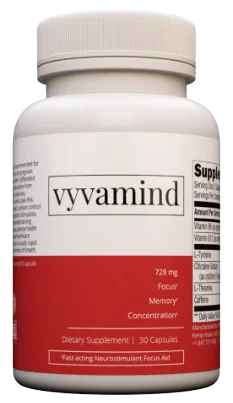
What it’s good for: As a complete nootropic supplement, Vyvamind provides top-to-bottom brain support to improve processing speeds and overall brain health. It’s highly effective for increasing mental energy, boosting productivity, and enhancing cognitive abilities, which leads to optimal performance in work and daily life.
Who it’s good for: Vyvamind is an ideal supplement for high-performing adults who work demanding jobs, study for exams, or train for a competition. It is also useful for individuals who feel mentally drained and need an extra push to stay productive.
Pros
- Scientifically proven to increase mental energy levels
- Keeps you alert throughout the day
- Strengthens mental performance under stress
- Boosts your motivation and focus similar to Adderall
Cons
- Can cause headaches in high dosages
- May not be suitable for people sensitive to caffeine
Active Ingredients
- Caffeine Anhydrous — 75mg
- L-Theanine — 150mg
- Citicoline (CDP Choline) — 200mg
- L-Tyrosine — 300mg
- Vitamin B6 (Pyridoxine HCL) — 2.5mg
- Vitamin B12 (Methylcobalamin) — 50mcg
3. Mind Lab Pro
Mind Lab Pro® claims to be the world’s first Universal Nootropic™, which aims to deliver a host of cognitive benefits without targeting a specific area of the brain. It enhances focus and memory, alleviates mental tiredness, and prevents brain cell degeneration.
It’s safe to say that Mind Lab Pro is one of the finest nootropics money can buy. This supplement contains 11 organic ingredients that target four brain pathways, resulting in improved cognitive and mental abilities throughout. Mind Lab Pro is great for fighting brain fog, improving memory, and experiencing general cognitive enhancement. It’s recommended to take 2-4 capsules daily, with 2 in the morning for the best results.
While the price point may be high, the benefits are worth it for those looking to optimize their brain function. Overall, Mind Lab Pro is a highly recommended supplement for anyone looking to enhance their peak cognitive performance naturally.
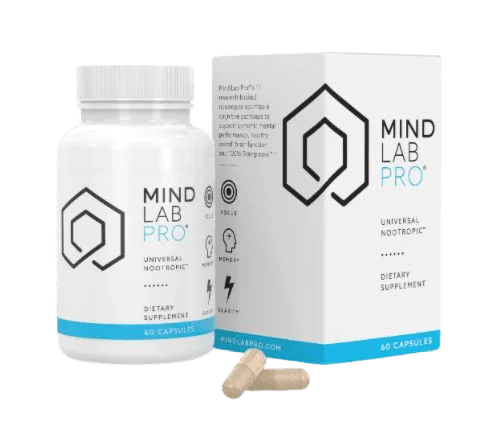
What it’s good for: Mind Lab Pro is unexcelled for improving greater cognitive function and brain health. The carefully selected ingredients in Mind Lab Pro work together to optimize the human brain, resulting in improved memory, focus, attention, and overall mental performance.
Who it’s good for: Mind Lab Pro is designed to improve cognitive performance and brain function in all kinds of people, making it a superb choice for anyone looking to enhance their daily brainpower and protect their long-term healthy function. Whether you’re a busy professional, a student, an athlete, a senior, or someone simply looking for a mental edge in life, Mind Lab Pro can help.
Pros
- Enhances cognitive function and fights age-related cognitive decline
- Helps produce alpha brain waves for better concentration
- Long-term brain health benefits
- Contains no stimulants
Cons
- It may take some time to see results
- May not be effective for everyone
Active Ingredients
- Citicoline (CDP Choline) — 250mg
- Bacopa Monnieri Extract (24% Bacosides) — 150mg
- Lion’s Mane Mushroom — 500mg
- Sharp-PS® Green Phosphatidylserine (Sunflower Lecithin) — 100mg
- N-Acetyl L-Tyrosine — 175mg
- Suntheanine® L-Theanine — 100mg
- Rhodiola Rosea (3% Rosavins, 1% Salidrosides) — 50mg
- Maritime Pine Bark Extract (95% Proanthocyanidins) — 75mg
- Vitamin B6 — 2.5mcg
- Vitamin B9 — 100mcg
- Vitamin B12 — 7.5mcg
4. Nooceptin
Nooceptin is an excellent nootropic supplement that has gained attention for its ability to improve cognitive health, short- and long-term memory, and enhance mental performance. The popular nootropic formula boasts a unique blend of combined natural ingredients, backed by solid scientific research, that can benefit cognition, memory retention, inflammation, heart health, immunity, and mental wellbeing.
Based on our thorough research and its well-studied ingredients, such as Lion’s Mane mushroom(3), Bacopa Monnieri,(4) and Rhodiola Rosea,(5) it’s definitely one of the most powerful nootropics currently available on the market. Overall, Nooceptin is a highly effective all-in-one daily nootropic that is suitable for anyone looking to boost their peak mental performance.
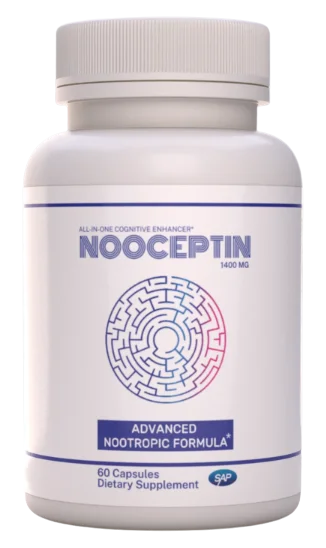
What it’s good for: Nooceptin is optimally suited to optimize brain health and enhancing cognitive function. The natural nootropic supplement aims to boost memory, improve mental focus, and learning, among other benefits.
Who it’s good for: Nooceptin is especially beneficial for those who struggle with day-to-day motivation and learning, such as students or individuals with demanding jobs.
Pros
- Effectiveness of ingredients scientifically proven by 20 studies
- Reduces tension and anxiety while improving attention
- Improves memory and recall in the long term
- Helps with brain cell regeneration
Cons
- Slow shipping because of the high demand
- Expensive for people on a tight budget
Active Ingredients
- Citicoline (CDP Choline) — 200mg
- Rhodiola Rosea Extract (3% Rosavins, 1% Salidroside) — 150mg
- Bacopa Monnieri Extract (40% Bacosides) — 150mg
- L-Theanine — 200mg
- Ginkgo Biloba Extract (24% Flavone Glycosides, 6% Terpene Lactones) — 100mg
- Lion’s Mane Mushroom Extract (30% Polysaccharides) — 400mg
- Panax Ginseng Extract — 200mg
5. Feedamind
Feedamind is one of the strongest nootropic supplements on the market because of its unique blend of 16 natural ingredients that work in synergy to deliver powerful results, including boosting mental performance and energy. The inclusion of special ingredients like Chocamine® Plus and Dynamine™ gives Feedamind an edge over other natural nootropic supplements.(6)
Overall, Feedamind is still highly effective and safe, making it a go-to choice for those seeking to enhance their cognition and motivation.
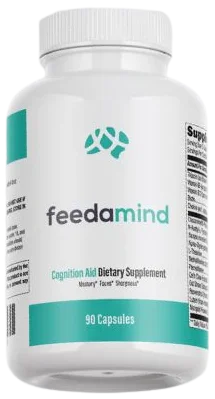
What it’s good for: Feedamind is most effective for boosting mental performance and energy, as well as improving mental function, focus, and memory function.
Who it’s good for: Feedamind is perfect for individuals seeking to boost their focus, energy, mental capacities, and cognitive ability to function in both the short and long term.
Pros
- Helps improve mental performance
- Increases energy
- Short- and long-term cognitive enhancement
Cons
- Suboptimal amounts of some ingredients
- Potential for mild side effects
Active Ingredients
- Chocamine® Plus — 500mg
- N-Acetyl-L-Tyrosine (NALT) — 250mg
- Bacopa Monnieri Extract (40% Bacosides) — 125mg
- Alpha GPC (L-Alpha-Glycerylphosphorylcholine) — 100mg
- L-Theanine — 50mg
- Dynamine™ (Methylliberine) — 50mg
- Pterostilbene — 46.7mg
- Cat’s Claw Extract (Uncaria Tormentosa) — 20mg
- Oat Straw Extract — 20mg
- Resveratrol — 14.3mg
- Lutein — 6mg
- Marigold Flower Extract (Tagetes Erecta L.) — 6mg
- Vitamin B1 (Thiamin) — 1.1mg
- Vitamin B6 — 1.5mg
- Vitamin B7 (Biotin) — 5mg
- Vitamin B12 (Methylcobalamin) — 100mcg
6. Performance Lab Mind
Performance Lab Mind is one of the most effective nootropics on the market today. This supplement enhances cognitive performance through its stream-lined and targeted formula. It boosts energy levels, mental alertness, logical thinking, memory retention, and concentration, including no stimulants like caffeine or others. Performance Lab Mind is suitable for anyone looking to improve their brain function, energy, and general well-being.
What sets this supplement apart is that it focuses on enhancing dopamine, which is a crucial brain chemical for memory retention. Performance Lab Mind strengthens mitochondria and increases cerebral blood flow, making it an ideal dietary supplement for burnout resistance.
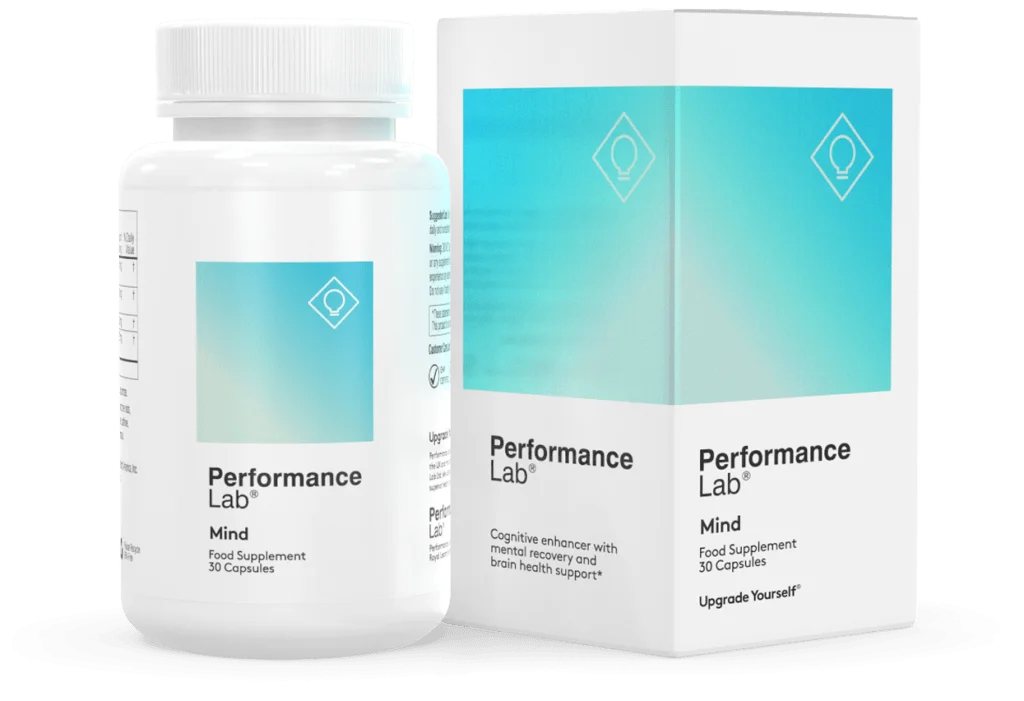
What it’s good for: Performance Lab Mind is good for people who want to improve their memory retention, logical thinking, and concentration while reducing brain fog and enhancing clarity of thought.
Who it’s good for: Performance Lab Mind is a fantastic supplement suitable for anyone who wants to enhance cognitive function, improve memory retention, and boost brain energy without relying on stimulants.
Pros
- High-quality, clinically studied ingredients
- Does not contain any stimulants
- Suitable for vegetarians and vegans
Cons
- Only available for purchase online
- Can be more expensive than other options
Active Ingredients
- Cognizin® Citicoline — 250mg
- Sharp-PS® Green Phosphatidylserine — 100mg
- Ajipure® L-Tyrosine — 250mg
- Maritime Pine Bark Extract (Pinus Pinaster, 95% Proanthocyanidins) — 75mg
7. Qualia Mind
Qualia Mind is a powerful nootropic supplement that contains a complex blend of 28 nootropic compounds that target vital chemical messengers and other signaling systems in the brain. The premium supplement by Neurohacker Collective is designed to enhance brain function, promote focus, support energy, mood, creativity, and mental clarity.
However, some ingredients are well-dosed, while others are not. Qualia Mind also isn’t very convenient, as it requires taking seven capsules in one serving. Overall, Qualia Mind is one of the most advanced and top-rated brain supplements for enhancing brain capacity and offering cognitive benefits. It may not be suitable for everyone because of its dosing and complexity.
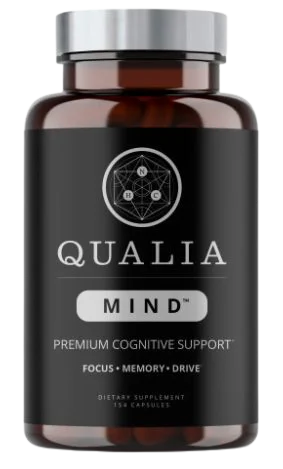
What it’s good for: With its powerful blend of nootropic ingredients, choline donors, amino acids, neuro-vitamins, minerals, adaptogenic extracts, and neuro-antioxidants, Qualia Mind supports long-term healthy brain function.
Who it’s good for: Qualia Mind is perfect for individuals who are seeking a comprehensive cognitive boost. It is especially helpful for those who need to focus for prolonged periods of time, as it helps to eliminate brain fog and keeps the mind sharp.
Pros
- Boosts brain power, focus, memory, and mental clarity
- Supports neural pathways important for optimal brain function
- Contains a staggering 28 clinically proven cognitive-enhancing ingredients
- Amplifies drive, productivity, and creativity
Cons
- Hefty price tag
- Recommended dosages are high
- Serving size of seven capsules
- May take several weeks before users notice any significant improvements
Active Ingredients
- Vitamin C — 100mg
- Vitamin D3 (Cholecalciferol) — 25mcg
- Thiamine (Thiamine HCI) — 50mg
- Niacin (Niacinamide) — 50mg
- Vitamin B6 (Pyridoxal 5′-Phosphate) — 20mg
- Vitamin B12 (Methylcobalamin) — 1,000mcg
- Pantothenic Acid (Calcium Pantothenate) — 50mg
- Acetyl-L-Carnitine HCI (ALCAR) — 500mg
- Artichoke Leaf Extract (4% Cynarin and related flavonoids) — 500mg
- Bacopa Monnieri Leaf Extract — 300mg
- Rhodiola Rosea Root Extract (3% Rosavins, 1% Salidrosides) — 300mg
- DL-Phenylalanine — 300mg
- Uridine-5′-Monophosphate Heptahydrate Disodium (UMP) — 250mg
- N-Acetyl-L-Tyrosine (NALT) — 250mg
- Taurine — 200mg
- L-Theanine — 200mg
- Alpha-Glycerylphosphorylcholine (Alpha GPC) — 200mg
- Cognizin® (Citicoline) — 150mg
- Organic Coffeeberry® (90mg Caffeine) Whole Coffee Fruit Extract — 129mg
- Velvet Bean (Mucuna Pruriens) Seed Extract — 100mg
- Phosphatidylserine (from Sunflower Lecithin) — 100mg
- Theobromine — 100mg
- DHA (Docosahexaenoic Acid from Algae) — 80mg
- Celastrus Paniculatus Seed Extract — 60mg
- Ginkgo Biloba Leaf Extract (24% Glycosides) — 50mg
- Coleus Forskohlii Root Extract (20% Forskolin) — 20mg
- Pyrroloquinoline Quinone Disodium (PQQ) — 10mg
- Huperzia Serrata Leaf Extract (7% Huperzine A) — 5mg
How We Picked These Nootropic Supplements
To determine the top-quality nootropics on the market, we employed a thorough testing and review process encompassing effectiveness, ingredients, brand reputation, transparency, production method, user feedback, price, and value. This approach allowed us to present readers with a credible and comprehensive list of top-notch nootropics.
Numerous products did not make it on this list, including but not limited to:
- Onnit Alpha Brain
- Hunter Focus
- Focus Factor
- Thesis Nootropics
- Elm & Rye
- Brainzyme Focus Pro
- L-655,708
- Methylphenidate
- Nicotine
Effectiveness
We explored clinical trials and user experiences, focusing on cognitive enhancement, mental clarity, and improved focus and performance.
Ingredients
We carefully examined each formula, placing emphasis on evidence-supported, natural, and high-quality ingredients that may improve your cognitive function.
Scientific Evidence
We consulted peer-reviewed studies and meta-analyses to confirm the effectiveness of key ingredients that boost cognitive performance.
Dosage
We evaluated the optimal dosages and ingredient ratios, making sure they correspond with established human research for maximum efficacy.
Safety
We ensured the safety of each ingredient, considering possible side effects and interactions, and verifying compliance with regulatory guidelines. We gave preference to FDA-approved ingredients.
Brand Reputation
We assessed brands’ credibility and trustworthiness by examining customer reviews, expert endorsements, and company history.
Product Transparency
We valued comprehensive ingredient disclosure, including sources and concentrations, empowering consumers to make informed decisions.
Manufacturing Process
We investigated manufacturing standards, giving priority to products made in certified facilities adhering to Good Manufacturing Practices (GMP).
User Reviews
We analyzed genuine customer feedback, emphasizing testimonials that highlighted cognitive enhancement and mental performance improvements.
Price
We compared product prices, confirming they were competitive and proportional to the quality and effectiveness of the supplement.
Value
We evaluated overall value, weighing the balance of price, quality, and effectiveness of each brain pill to guarantee an optimal return on investment.
Most Effective Nootropic Ingredients
| Ingredient | Effects |
|---|---|
| Bacopa Monnieri | Enhances memory, learning, and cognitive function through neuroprotective and antioxidant properties. |
| CDP Choline | Boosts focus and mental clarity by increasing choline and uridine levels, supporting the synthesis of brain cell membranes. |
| Lion’s Mane Mushroom | Promotes neurogenesis and neural plasticity and brain-derived neurotrophic factor (BDNF), improving memory and cognitive function. |
| L-Theanine | Induces relaxation without drowsiness, improving focus and attention span by modulating neurotransmitters, and can help improve sleep. |
| Rhodiola Rosea | Reduces stress and fatigue, increasing mental endurance and cognitive performance. |
| L-Tyrosine | Improves working memory and stress resilience by increasing the production of catecholamine neurotransmitters. |
| Caffeine | Enhances alertness, attention, and cognitive function by blocking adenosine receptors in the brain. |
| Ginkgo Biloba | Increases blood flow to the brain, improving memory and cognitive function through antioxidant and anti-inflammatory properties. |
| Noopept | Enhances cognitive function, memory, and learning by modulating neurotransmitter systems and neuroplasticity. |
| Piracetam | Improves learning and memory by increasing cell membrane fluidity and promoting neuronal communication. |
| Modafinil | Increases wakefulness, alertness, and cognitive function by modulating neurotransmitter systems, particularly dopamine and norepinephrine. |
| Vinpocetine | Improves cerebral blood flow and metabolism, enhancing memory and cognitive function through neuroprotective effects. |
| Panax Ginseng | Boosts cognitive performance, reduces mental fatigue, and improves mood through adaptogenic and antioxidant properties. |
| Ashwagandha | Reduces stress and anxiety, supporting cognitive function and memory through adaptogenic and neuroprotective effects. |
| Pramiracetam | Enhances memory and cognitive function by increasing high-affinity choline uptake and promoting efficient brain cell communication. |
| Oxiracetam | Improves memory, learning, and cognitive function by modulating neurotransmitter release and stimulating neuronal plasticity. |
| Picamilon | Reduces anxiety and stress while increasing GABA, cerebral blood flow, improving cognitive function and mental clarity. |
| Aniracetam | Enhances memory, learning, and creativity by modulating glutamate receptors and stimulating the release of acetylcholine. |
| Phenylpiracetam | Increases cognitive function, memory, and mental energy by modulating neurotransmitter levels and improving brain cell communication. |
| Sulbutiamine | Boosts energy, focus, and mood by increasing thiamine levels and enhancing the synthesis of neurotransmitters. |
| Unifiram | Enhances memory, learning, and cognitive function by modulating AMPA receptors and increasing synaptic plasticity. |
| Sunifiram | Improves memory and cognitive performance by modulating AMPA receptors and stimulating the release of acetylcholine. |
| 9-Me-BC | Supports cognitive function and memory by promoting the growth and maintenance of dopaminergic neurons and protecting against neurotoxicity. |
| Omega-3 Fatty Acids | Promote brain health, cognitive function, and memory by reducing inflammation, promoting neuronal growth, and maintaining cell membrane fluidity. |
| Creatine | Enhances cognitive performance, particularly in tasks requiring short-term memory, low reaction times, and quick thinking, by increasing cellular energy production in the brain. |
| B Vitamins | Support cognitive function, brain health, and energy production by contributing to neurotransmitter synthesis, DNA repair, and cellular metabolism. |
How Do Nootropics and Smart Drugs Work?
Nootropics are substances that can improve cognitive function, memory, and focus.(7) They may also help to increase intelligence and creativity. Some people use them to boost their productivity, while others take them to enhance their mood or reduce stress levels. Many nootropic herbs are also used in Ayurvedic medicine.
There are many potential benefits to using nootropics, also known as “smart drugs.”(8) They are thought to work by modulating neurotransmitter systems in the brain. This can lead to increased concentration and optimize brain function. Also, they may help protect the brain from damage caused by free radicals and other toxins.
While more research is needed to substantiate the claims about the efficacy of some nootropics, there is evidence to suggest that these substances can boost brain function.
Some benefits of using nootropics include:
- Improved memory
- Enhanced focus
- Increased concentration
- Improved brain function
- Protection from brain damage
- Reduced stress and anxiety
- Enhanced mood
- Increased intelligence
- Creativity boost
Nootropics FAQs
What are nootropics?
Nootropics are natural or synthetic substances that enhance cognitive functions, such as memory, creativity, and motivation. They work through various mechanisms, including boosting neurotransmitters, protecting brain cells, and improving blood flow to the brain.
How do I choose the right nootropic for me?
Consider your specific goals, such as memory enhancement or reducing anxiety. Research various nootropics to identify potential benefits and side effects.
Are nootropics safe?
Most nootropics have low toxicity and are safe for the human body when used appropriately. However, it is crucial to follow recommended dosages and assess any potential risks or interactions with medications.
Can I combine different nootropics?
Yes, many people create “nootropic stacks” to achieve specific cognitive goals. Be sure to research potential interactions and consult a qualified medical professional for personalized advice on stacking.
How quickly will I see results from using nootropics?
The effects of nootropics may vary. Some may produce immediate results, while others take weeks or longer to show noticeable improvements. Consistency and proper dosage are key to experiencing benefits.
Are nootropic effects permanent?
The benefits of nootropics are not permanent, and users typically need to continue supplementation to maintain improvements in cognitive performance. However, some compounds promote long-term brain health.
Are there any long-term risks associated with nootropic use?
There are potential long-term risks associated with their use. Taking higher than recommended doses can be toxic to the brain and lead to headaches, brain fog, confusion, loss of focus and motivation, lethargy, mental fatigue, migraines, stomach cramps, diarrhea, and constipation. There is also some evidence that people who take prescription nootropics to improve brain function may have a higher risk of impulsive behavior.
Can nootropics help manage conditions like dementia and Alzheimer’s disease?
Clinical studies have found that natural nootropics and brain-enhancing supplements may help manage cognitive decline and depression. They are also used for other conditions related to cognitive deficits, such as Alzheimer’s disease or dementia.
Can I take nootropics if I have a medical condition?
Consult your healthcare provider before taking nootropics if you have a pre-existing medical condition or take medications. They can potentially interfere with medications or worsen specific health conditions.
Can nootropics improve brain function?
Yes, they can help improve brain function by enhancing cognitive abilities such as memory, focus, and creativity.
Are natural nootropics better than synthetic ones?
It depends on the individual’s needs and preferences. Natural nootropics may have lesser side effects, but synthetic ones may be more potent.
Can nootropics support healthy brain cells?
Yes, certain nootropics can help support healthy brain cells by reducing oxidative stress and inflammation in the brain.
Are nootropics drugs or supplements?
Nootropics can be both drugs or supplements, depending on their categorization and intended use.
Summary
There are many good nootropic supplements on the market to choose from. However, not all these natural supplements are created equal. Some brain health supplements may be more potent than others, and some may have more side effects.
We found that the most effective and top-rated blends on the market are NooCube, Vyvamind, and Mind Lab Pro. These supplements contain a blend of high-quality nootropic ingredients that are research-backed and have been clinically proven to boost cognitive function and reduce mild cognitive impairment. These top quality nootropics are well-tolerated and have minimal side effects.
- Hidese, Shinsuke et al. “Effects of L-Theanine Administration on Stress-Related Symptoms and Cognitive Functions in Healthy Adults: A Randomized Controlled Trial.” Nutrients vol. 11,10 2362. 3 Oct. 2019, doi:10.3390/nu11102362↩
- Nakazaki, Eri et al. “Citicoline and Memory Function in Healthy Older Adults: A Randomized, Double-Blind, Placebo-Controlled Clinical Trial.” The Journal of nutrition vol. 151,8 (2021): 2153-2160. doi:10.1093/jn/nxab119↩
- Lai, Puei-Lene et al. “Neurotrophic properties of the Lion’s mane medicinal mushroom, Hericium erinaceus (Higher Basidiomycetes) from Malaysia.” International journal of medicinal mushrooms vol. 15,6 (2013): 539-54. doi:10.1615/intjmedmushr.v15.i6.30↩
- Kongkeaw, Chuenjid et al. “Meta-analysis of randomized controlled trials on cognitive effects of Bacopa monnieri extract.” Journal of ethnopharmacology vol. 151,1 (2014): 528-35. doi:10.1016/j.jep.2013.11.008↩
- Olsson, Erik M et al. “A randomised, double-blind, placebo-controlled, parallel-group study of the standardised extract shr-5 of the roots of Rhodiola rosea in the treatment of subjects with stress-related fatigue.” Planta medica vol. 75,2 (2009): 105-12. doi:10.1055/s-0028-1088346↩
- Suliman, Noor Azuin et al. “Establishing Natural Nootropics: Recent Molecular Enhancement Influenced by Natural Nootropic.” Evidence-based complementary and alternative medicine : eCAM vol. 2016 (2016): 4391375. doi:10.1155/2016/4391375↩
- Malík, Matěj, and Pavel Tlustoš. “Nootropics as Cognitive Enhancers: Types, Dosage and Side Effects of Smart Drugs.” Nutrients vol. 14,16 3367. 17 Aug. 2022, doi:10.3390/nu14163367↩
- Schifano, Fabrizio et al. “Benefits and Harms of ‘Smart Drugs’ (Nootropics) in Healthy Individuals.” Drugs vol. 82,6 (2022): 633-647. doi:10.1007/s40265-022-01701-7↩
